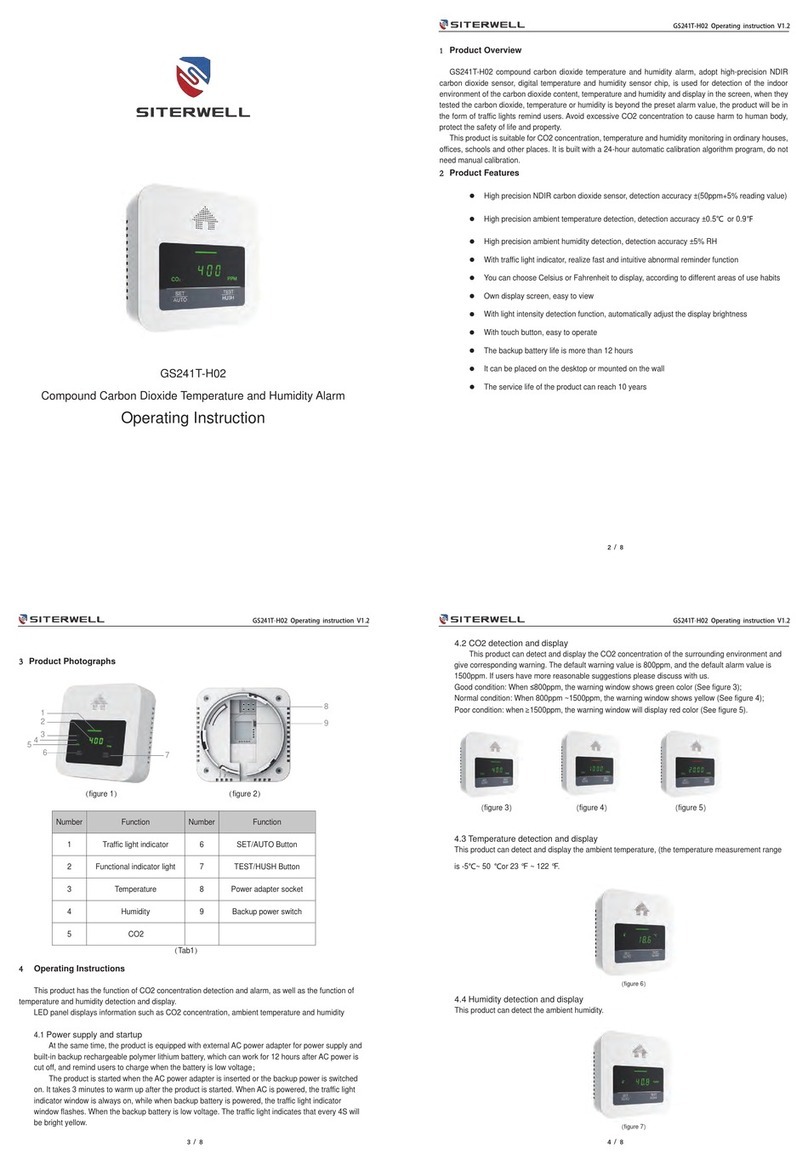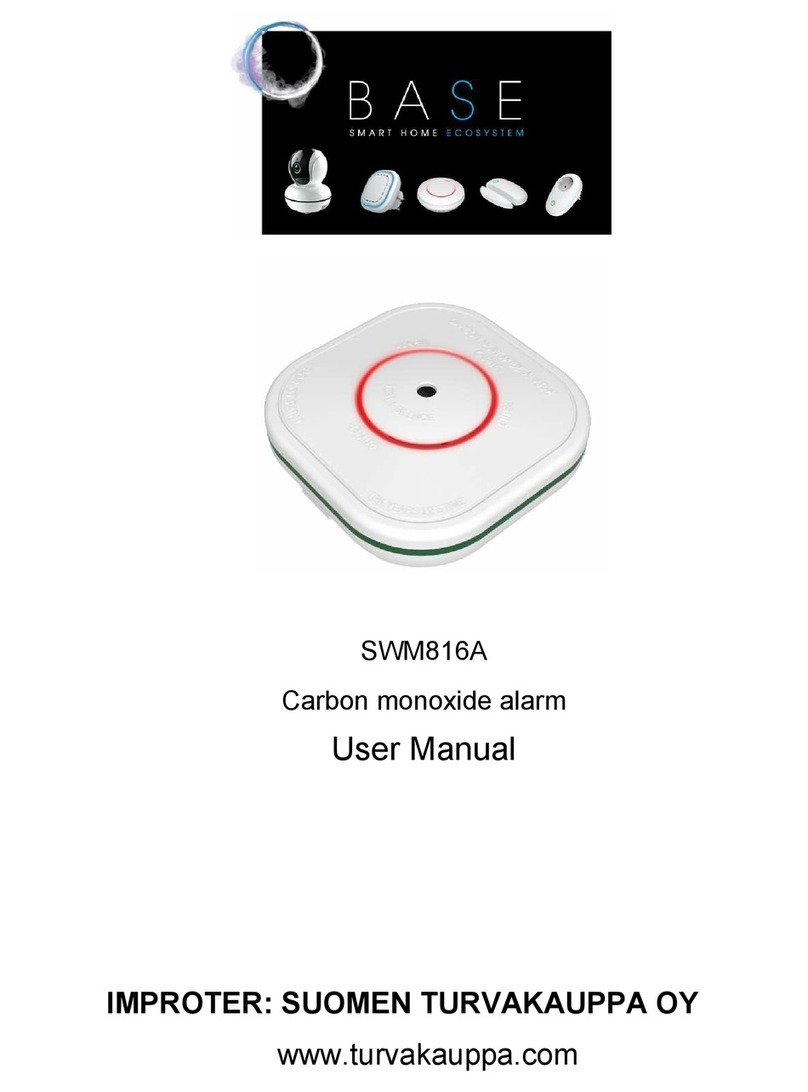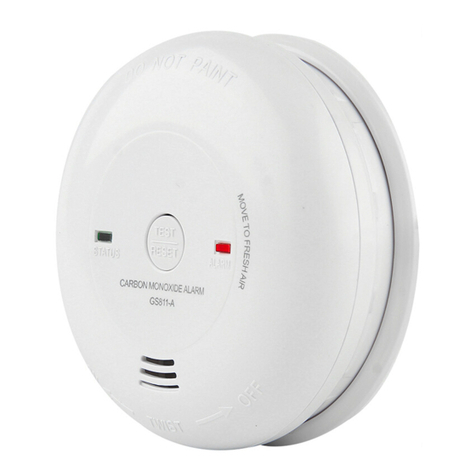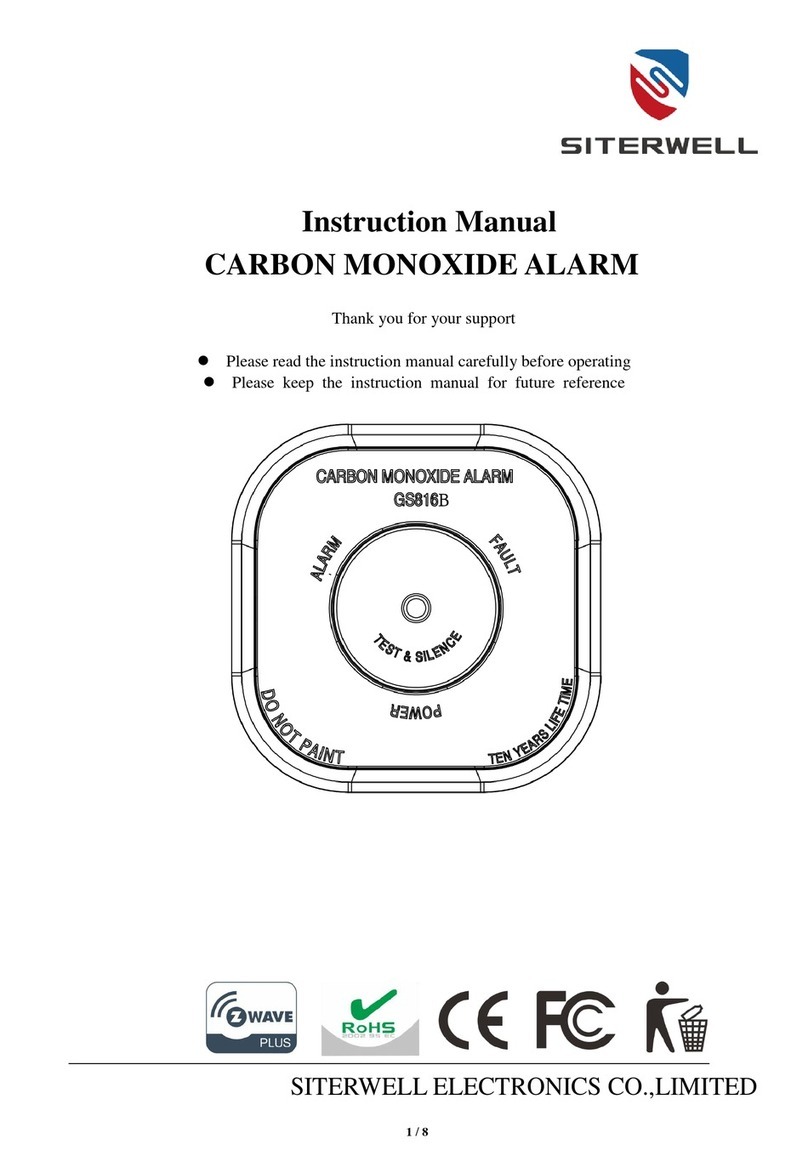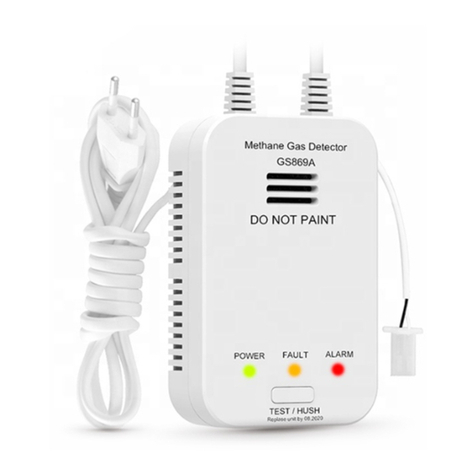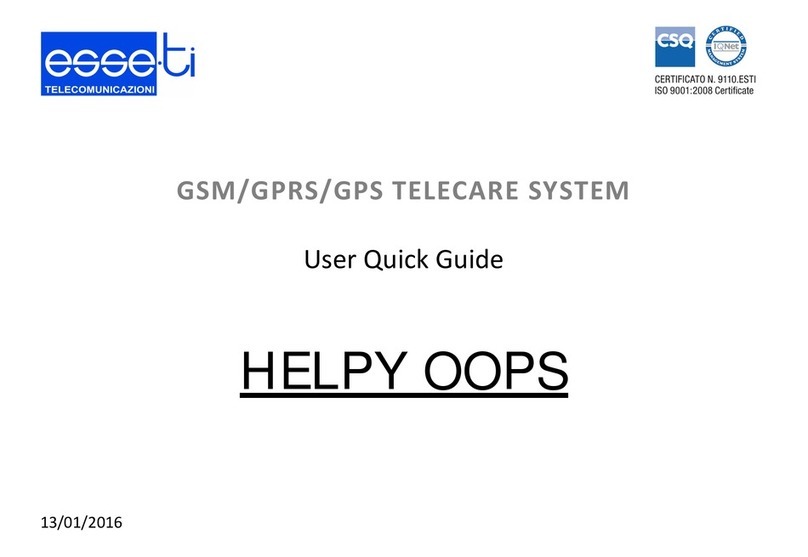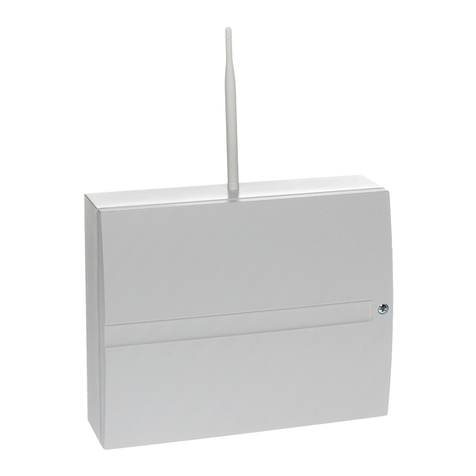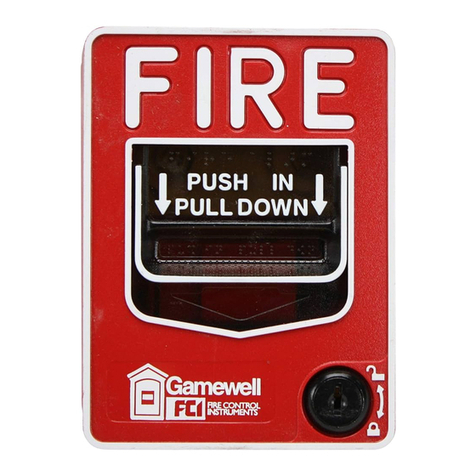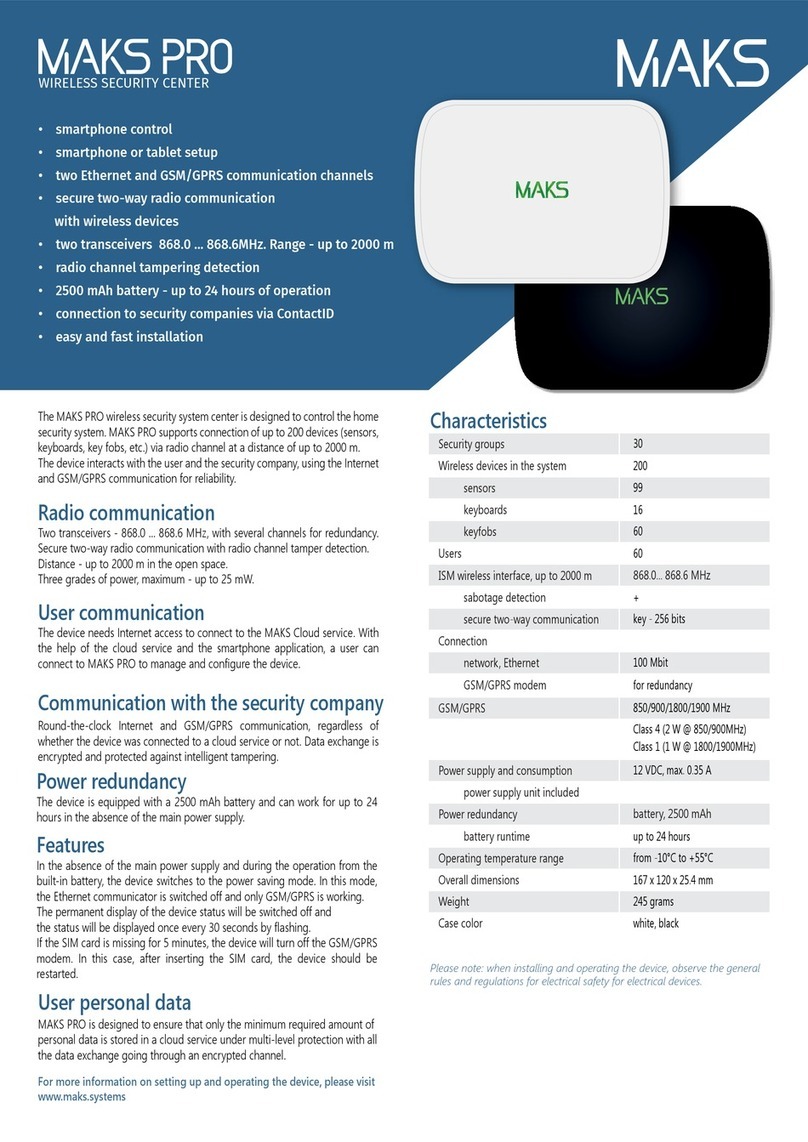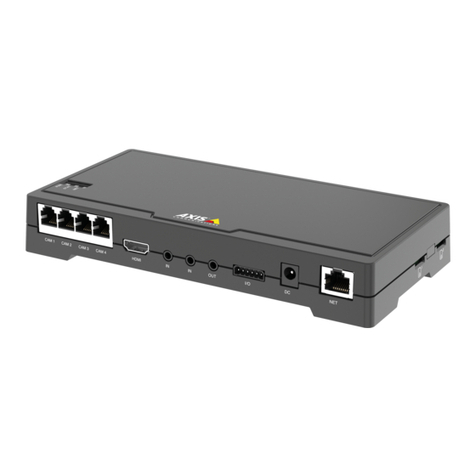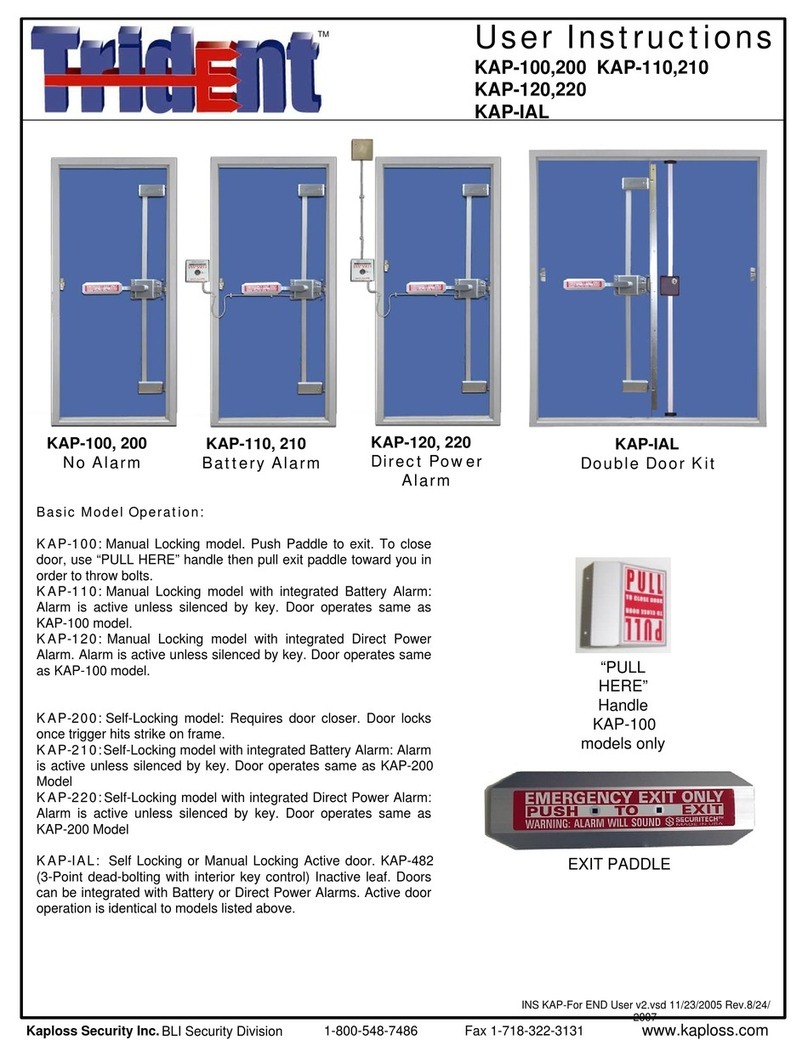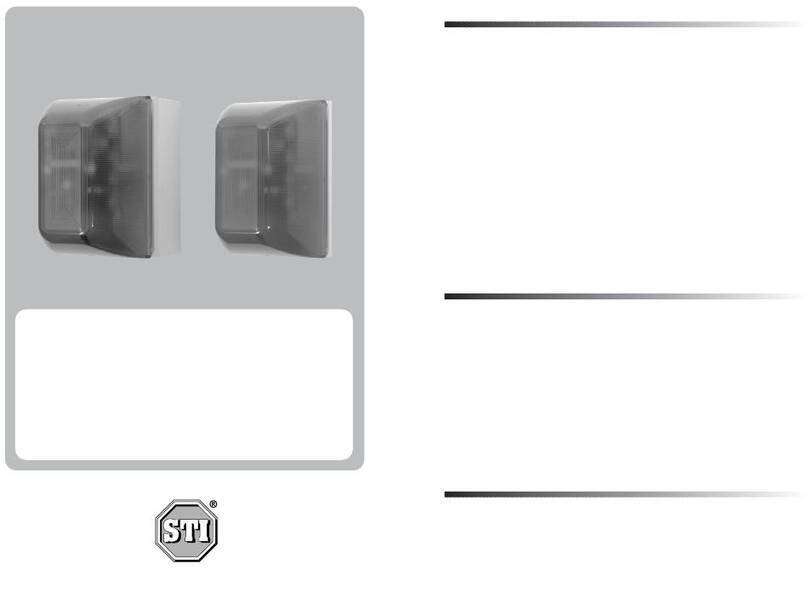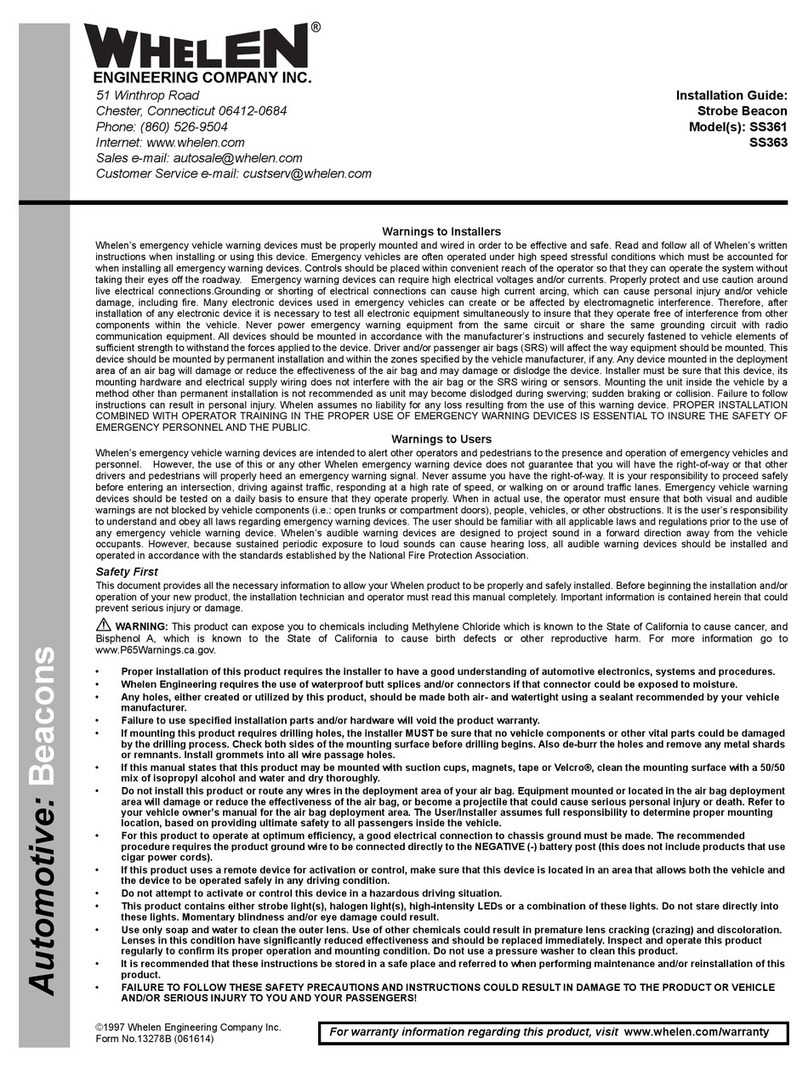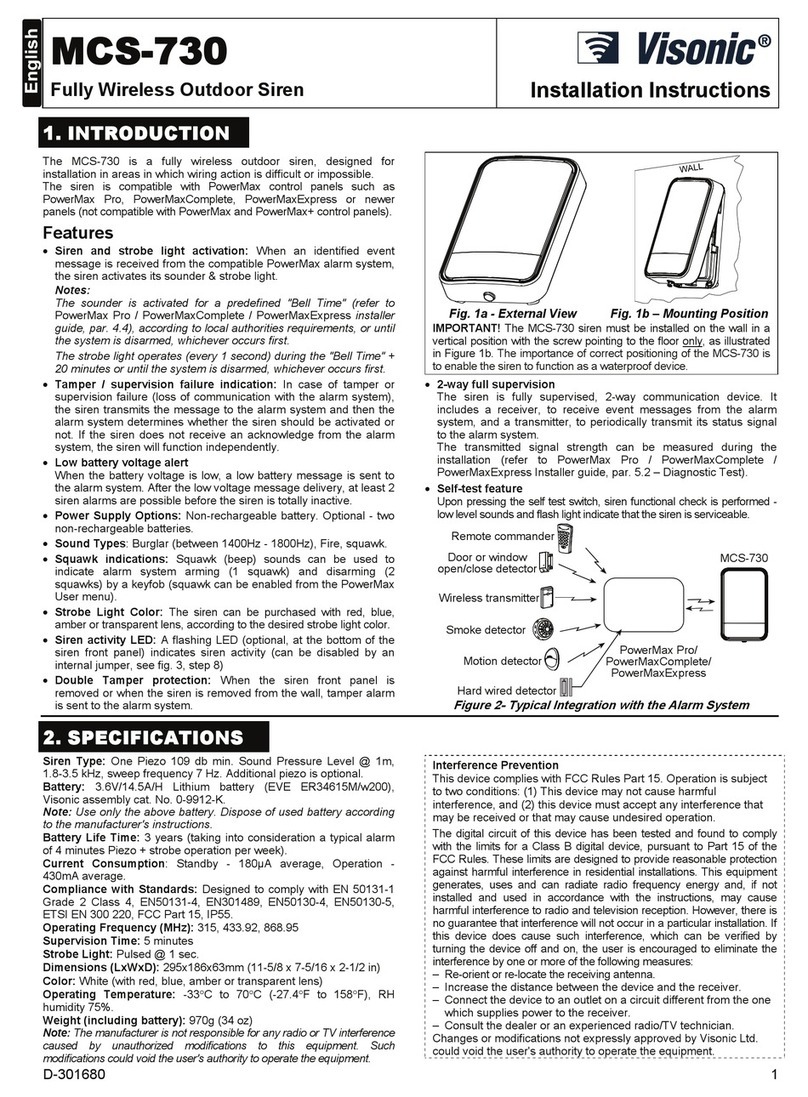Siterwell GS828 User manual

1/8GS828 Manual Rev. Draft
CARBON MONOXIDE ALARM USER'S MANUAL
MODEL No.: GS828
Thank you for purchasing the GS828 carbon monoxide (CO) alarm. This device is a product that has been built using state-of-the-art
technology.
This user guide contains important information on starting operation and using the devise. Store this user guide in a safe place for
future reference. These instructions are a part of this product – bear this in mind if you pass on this product to others.
Please take a few minutes to thoroughly read the user's guide and familiarize yourself and your family with its operation.
CAUTION:
This CO alarm is designed for indoor use only. DO not expose to rain or moisture. DO not knock or drop the detector. DO
not open or tamper with the alarm as this could cause malfunction.
The alarm will not protect against the risk of carbon monoxide poisoning when the battery has drained.
Installation of the alarm should not be used as a substitute for proper installation, use and maintenance of fuel burning
appliances including appropriate ventilation and exhaust systems.
Table of Contents
1. Installation instructions-----------------------------------2/8
2. Product overview------------------------------------------4/8
3. Understanding your CO alarm----------------------------4/8
4. What to do if the alarm sounds--------------------------5/8
5. Battery installation/replacement-------------------------6/8
6. General maintenance--------------------------------------6/8
7. Carbon monoxide overview-------------------------------6/8
8. Specification------------------------------------------------7/8
9. Manufacturer and Customer service information-------7/8
10. Warranty card---------------------------------------------8/8
11. Warranty Information------------------------------------8/8
EN50291-1:2010 + A1:2012
18

2/8GS828 Manual Rev. Draft
1. Installation instructions
1.1 Installation location
When choosing your installation locations, make sure you can hear the alarm from all sleeping areas. If you install only one CO alarm
in your home, install the alarm near bedrooms, not in the basement or furnace room. The recommended position for the unit should
be at least 1.8 meters (about 6 feet) above the floor level.
CAUTION: This alarm should be installed by a competent person.
1.2 Mounting step
1: Drilling two ф5.0mm holes in the wall, the distance between two holes center is 52mm(2.0 inch),then inserting two plastic stopper
provided into the holes.
2: Insert the two screws provided until the screw heads are approximately 5mm from wall.
3: Test the unit by using the TEST/SILENCE button. Ensure the unit sound is alarm pattern.
4: Hook the unit over the screws onto keyholes in back of unit.
As you install the battery on the unit, maybe it will sound for several minutes, then stop and enter in normal operation mode.
If it always sounds, please call our agent.
1.3 Recommended installation locations:
The following suggestions are intended to help you with the placement and installation of your CO alarm.
■Place out of the reach of children. Under no circumstance should children be allowed to handle the CO alarm.
■Install in a bedroom or hallway located close to the sleeping area. Take special care to verify the alarm can be heard in sleeping
areas.
■It is recommended that a CO alarm be installed on each level of a multilevel home.
■Locate 1~3 meter (3.3~10feet) away from all fuel burning appliances.
■Placing at eye level allows for optimum monitoring of the red and green indicator lights.
■Insure that all vents of the unit are unobstructed.
■Do not install in dead air spaces such as peaks of vaulted ceilings, or gabled roofs.
■Do not install in turbulent air from ceiling fans.
■Do not place near fresh air vents or close to doors and windows that open to the outside.
■Keep the CO alarm away from excessively dusty, dirty, or greasy areas such as kitchens, garages and furnace rooms. Dust, grease
and household chemicals can affect the sensor.
■Keep out of damp and humid areas such as the bath room. Avoid spraying aerosols near the CO alarm.
■Do not install in areas where the temperature is below-10℃ or hotter than 40℃.
■Do not place behind curtains or furniture. CO must be able to reach the sensor for the unit to accurately detect CO.

3/8GS828 Manual Rev. Draft
2. Product overview
2.1 POWER indicator
The POWER indicator (green LED) is used to indicate power status of the CO alarm. The POWER indicator will flash every 33 seconds.
2.2 FAULT indicator
The FAULT indicator (yellow LED) is used to indicate fault or warning status of the CO alarm.
2.3 ALARM indicator
The ALARM indicator (red LED) is used to indicate alarm status of the CO alarm.
2.4 TEST/SILENCE button
The TEST/SILECNE button is used to test the unit. Press and hold to enable TEST function.
2.5 Alarm sounder
The alarm sounder is used to send out CO alarm warning and fault warning information.

4/8GS828 Manual Rev. Draft
2.6 LCD screen
Indicates CO concentration and alarm status.
3. Understanding your CO alarm:
3.1 Start up
After connecting the battery, all three LEDs light up briefly and the CO alarm confirms start-up with a beep.
After power on, 40 seconds before the green LED flash every 3 seconds, This is preheated state, 40 seconds later the green LED
flashing every 33 seconds indicates the unit is functioning properly.
The LCD will active for 40 seconds ,as follow:
3.2 Normal operation
The POWER indicator (green LED) flashing every 33 seconds.
3.3 Fault warning
If the unit chirps twice every 38 seconds, with FAULT indicator (yellow LED) will be flash. It indicates the CO alarm is in malfunction
condition. That means your CO alarm has no detecting function and no respond CO.
The LCD will active for 4 seconds every 38 seconds ,as follow:
Replace battery, if condition continues, the CO alarm has malfunctioned. Replace immediately. Please contact us to more service.
3.4 Low battery voltage warning
If the alarm chirps once every 33 seconds, with FAULT indictor (yellow LED) will be flash. It indicates the battery is low.
The LCD will active for 1 seconds every 33 seconds ,as follow:
NOTE: You need to replace the batteries immediately when the alarm enters this status.
NOTE: The alarm will not protect against the risk of carbon monoxide poisoning when the battery has drained.
NOTE: Refer to “5. Battery installation/replacement” when you hear the sounds of the low battery voltage warning.
3.5 Low battery voltage warning silence
When the alarm is under the low battery warning, pressing the TEST/SILENCE button, it will come into silence status for about 9 hours,
and FAULT indicator (yellow LED) still keep flashing.
The LCD will active for 1 seconds every 33 seconds ,as follow:
NOTE: When alarm under the low battery warning, please replace the battery in time to ensure the normal working.

5/8GS828 Manual Rev. Draft
3.6 End of life warning
If the alarm chirps 3 times every 33 seconds with FAULT indicator (yellow LED) flash. It indicates end of life of the CO alarm. You need
to immediately replace the CO alarm.
the LCD will active for 4 seconds every 33 seconds ,as follow:
3.7 CO alarm warning
When the alarm detects a dangerous level of CO, the alarm will emit a loud alarm pattern. The alarm signal pattern is 4 quick beeps
followed by 5 seconds of silence. This cycle repeats as long as a dangerous CO condition exists. The red alarm LED will flash the same
pattern.
This signal will repeated until the alarm resets after dissipation of CO.
When CO concentration is >=30ppm, the LCD will active for 4 seconds every 33 seconds, and alarm is positive , the LCD will always
active, display CO concentration as follow:
Sensitivity Setting: Conforms to EN 50291-1:2010+A1:2012 standard.
30PPM Without alarm before 120 minutes
50PPM Between 60 to 90 minutes
100PPM Between 10 to 40 minutes
300PPM Less than 3 minutes
NOTE: Refer to “4. What to do if the alarm sounds” when you hear the sounds of the CO alarm warning.
3.8 human alarm sounds
If the alarm come into the status of CO alarm warning, the alarm will start in a lower alarm volume (<85dB) for around 10 seconds,
then issuing a normal alarm volume (>85dB). It will avoid people to be scared suddenly by a loudness alarm sound.
3.9 Test the unit
To test the alarm, press and hold TEST/SILENCE button,you should hear alarm sound patterns and with a corresponding ALARM
indicator (red LED) flash. The alarm sound patterns will stop when release TEST/SILENCE button.
The test alarm sound pattern includes: 4 short beeps, 5 seconds pause, repeat the pattern until release TEST/SILENCE button.
the LCD will activate for 100 seconds, as follow:
NOTE: After the TEST/SILENCE button is enabled, the alarm sounds and the red alarm light flashes. This does not indicate that
CO is present.
NOTE: Test the unit weekly! If at any time your unit does not perform as described, replace it immediately.
4. What to do if the alarm sounds
WARNING! –Actuation of your CO alarm indicates the presence of Carbon Monoxide (CO) which can KILL YOU.
WARNING! –Action of this device indicates the presence of dangerous levels of CO! CO can be fatal! If the alarm sounds:
1. Operate the TEST/SILENCE button.
2. Shut down furnaces and gas supply.

6/8GS828 Manual Rev. Draft
3. Immediately move to fresh air outdoor or by an open door/window. Do a head count to check that all persons are accounted. Do
not reenter the premises nor move away from the open door/window until the emergency services responders have arrived, the
premises have been aired out, and your alarm remains in its normal condition.
4. After following steps 1-3 , if your alarm reactivates within a 24 hour period, repeat steps 1-3 and call a qualified appliance
technician to investigate for sources of CO from fuel burning equipment and appliances and inspect for proper operation of this
equipment ,If problems are identified during this inspection, have the equipment serviced immediately. Note any combustion
equipment not inspected by the technician and consult the manufacturer’s instructions or contact the manufacturer directly for
more information about CO safety and this equipment. Make sure that motor vehicles are not or have not been operating in an
attached garage or adjacent to the residence.
5. Battery installation/replacement
once chirps with corresponding FAULT indicator (yellow LED) flashing once every 33 seconds indicates that the battery is low battery,
you must to replace the battery with battery specified, please see “8. Specification“
To install or replace the battery in unit, please perform the following steps:
5.1 Take down the unit from screw heads of the wall.
5.2 Open battery compartment.
5.3 Remove the old battery, and replaced by new battery.
5.4 Close battery compartment.
5.5 Hook the alarm body over the screw heads onto keyholes in back of the unit.
5.6 Test alarm using the TEST/SILENCE button, if the testing alarm is ok, means the product can work normally.
WARNING! –Use only the battery specified. Use of different battery may have a detrimental effect on the CO alarm. A good
safety measure is to replace the battery at least once a year.
NOTE: Reinstall immediately after cleaning and then test unit using the TEST/SILENCE button!
6. General maintenance:
To keep your CO alarm in good working order, please follow these simple steps:
6.1 Verify the unit's alarm sound and indictors operation by enable the TEST/SILENCE button once a week.
6.2 Remove the unit from the wall and clean the alarm cover and vents with a soft brush attachment once a month to remove dust
and dirt.
6.3 Never use detergents or other solvents to clean the unit.
6.4 Avoid spraying air fresheners, hair spray, or other aerosols near the CO alarm.
6.5 Do not paint the unit. Paint will seal the vents and interfere with the sensor's ability to detect CO. Never attempt to disassemble
the unit or clean inside. This action will void your warranty.
6.6 As soon as possible, place the CO alarm back in its proper location to assure continuous protection from carbon monoxide
poisoning.
6.7 When household cleaning supplies or similar contaminants are used, the area should be ventilated.
WARNING! –The following substances can affect the sensor and may cause false actions: methane, propane, isobutene,
isopropanol, ethylene, benzene, toluene, ethyl acetate, hydrogen sulfide, sulfur dioxides, alcohol based products, paints,
thinner, solvents, adhesives, hair sprays, after shaves ,perfumes and some cleaning agents.
WARNING! –Your CO alarm will not be operational and will not monitor for CO levels without battery.
WARNING! –This apparatus is designed to protect individuals from the acute effects of carbon monoxide exposure. It will not
fully safeguard individuals with specific medical conditions. If in doubt consult a medical practitioner.

7/8GS828 Manual Rev. Draft
7. Carbon monoxide (CO) overview:
CO cannot be seen, smelled or tasted and can be fatal. The buildup of CO in the blood is called the carboxyhemoglobin (COHb) level
and interferes with the body’s ability to supply itself with oxygen. Depending on the concentration, CO can kill in minutes.
The most common sources of CO are malfunctioning gas appliance used for heating and cooking ,vehicles running in an attached
garage, blocked chimneys or flues, portable fuel burning heaters, fireplaces, fuel powered tools and operating a grill in an enclosed
space.
Indications of carbon monoxide poisoning include symptoms similar to the flu, but with no fever. Other symptoms include dizziness,
fatigue, weakness, headache, nausea, vomiting, sleepiness and confusion. Everyone is susceptible to the danger of CO, but experts
agree that unborn babies, small children, pregnant women, senior citizens and people with heart or respiratory problems are at the
highest risk for serious injury or death. Every year a qualified technician should inspect and clean your heating system, vents, chimney,
and flues.
The following symptoms are related to CARBON MONOXIDE POISONING and should be discussed with ALL members of the
household:
7.1 Mild Exposure:Slight headache, nausea, vomiting, fatigue (often described as "Flu-like" symptoms).
7.2 Medium Exposure: Severe throbbing headache, drowsiness, fast heat rate.
7.3 Extreme Exposure:Unconsciousness, cardiorespiratory failure, death.
The above levels of exposure relate to healthy adults. Levels differ for those at high risk. Exposure to high levels of carbon monoxide
can be fatal or cause permanent damage and disabilities. Many cases of reported carbon monoxide poisoning indicate that while
victims are aware they are not well, they become so disoriented they are unable to save themselves by either exiting the building, or
calling for assistance. Also, young children and household pets may be the first effected. Familiarization with the effects of each level
is important.
WARNING! –Exposure to high levels of carbon monoxide can be fatal or cause permanent damage and disabilities.
8. Specification:
Model: GS828
Type of apparatus: Type B
Power Supply: DC 3V(2pcs alkaline battery)
Recommend battery type: GP GN15A / Raymax LR6
Sensor Type: Electrochemical
Product life: 7 years after manufacture
Sensitivity Setting: Conforms to EN 50291-1:2010+A1:2012 standard.
30PPM Without alarm before 120 minutes
50PPM Between 60 to 90 minutes
100PPM Between 10 to 40 minutes
300PPM Less than 3 minutes
Standby Current: <20µA (average)
Alarm Current: <50mA (average)
Operation Ambient Condition: -10~+40℃, 30~95% non-condensing
Storage/Transport Ambient Condition: -20~+50℃, 10~95% non-condensing
Alarm sound : ≥85DB at 100cm @3.2±0.5KHz pulsing alarm
Low Battery warning silence: about 9 hours
NOTE: This CO alarm is designed to detect carbon monoxide gas from any source of combustion. It is not designed to detect
any other gas.

8/8GS828 Manual Rev. Draft
9. Manufacturer and customer service information:
SITERWELL ELECTRONICS CO.,LIMITED
ADDRESS:No.666 Qingfeng Road, Jiangbei District, Ningbo, Zhejiang
Province, China
TEL: 0086-574-87729581
FAX: 0086-574-87729581
E-MAIL: Sales@china-siter.com
10. Warranty Card:
Name: First Name: Phone:
Address:
Zip Code: Country: City:
Fault description:
Date of purchase: Signature:
11. Warranty Information
THREE YEARS LIMITED WARRANTY
Dear customer,
Our products are subject to strict quality controls. However, if this device should unexpectedly not function
perfectly, please contact the customer services address given on warranty service information. This is the only way for
you to be able to return your device of have it picked up free.
The warranty period is 36 months and begins on the day of purchase.
Please always keep your till receipt as proof of purchase. Warranty claims can only be made for possible defects
caused by material and production faults.
During the warranty period, defective devices can be sent to the service address given overleaf for you (post paid).
You will then receive a new or repaired device back free. After the warranty period has expired you still have the
possibility of sending the defective device for repair to the address given overleaf. Repairs carried out after the
warranty period must be paid for.
In the event of misuse or improper treatment, use of force or intervention not carried out by our authorized
service branches, the warranty is no longer valid. This warranty does not restrict your legal rights.
NOTE: In the event of a warranty claim, please return the till receipt and completed warranty card with fault description
together with the defective device.
NOTE: The warranty does not cover the batteries supplied.
Table of contents
Other Siterwell Security System manuals
Popular Security System manuals by other brands
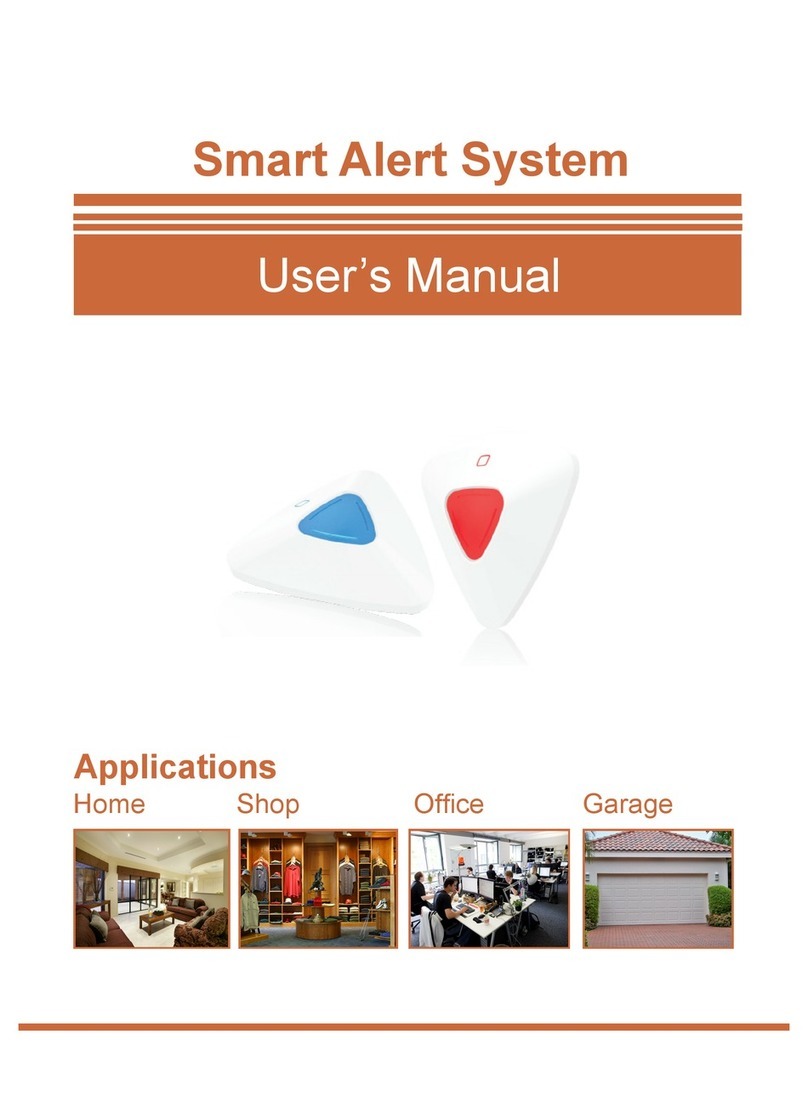
Unifore
Unifore Diamond user manual
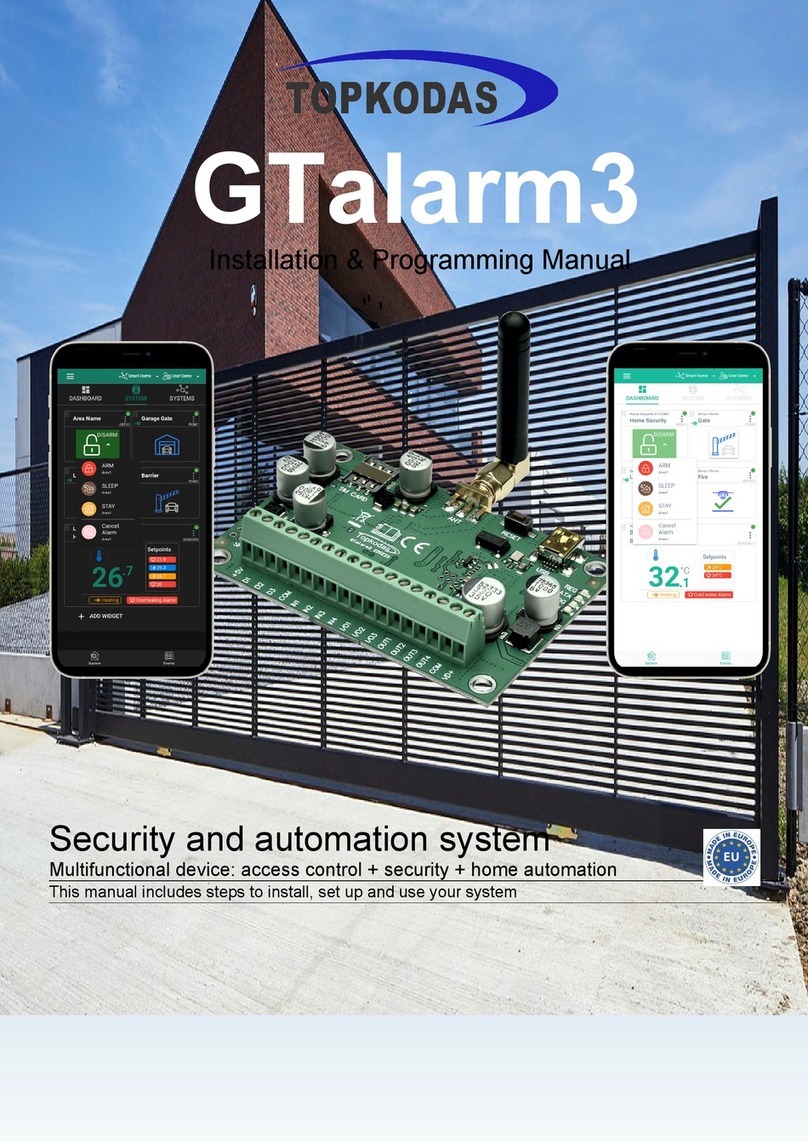
Topkodas
Topkodas GTalarm3 Installation & programming manual
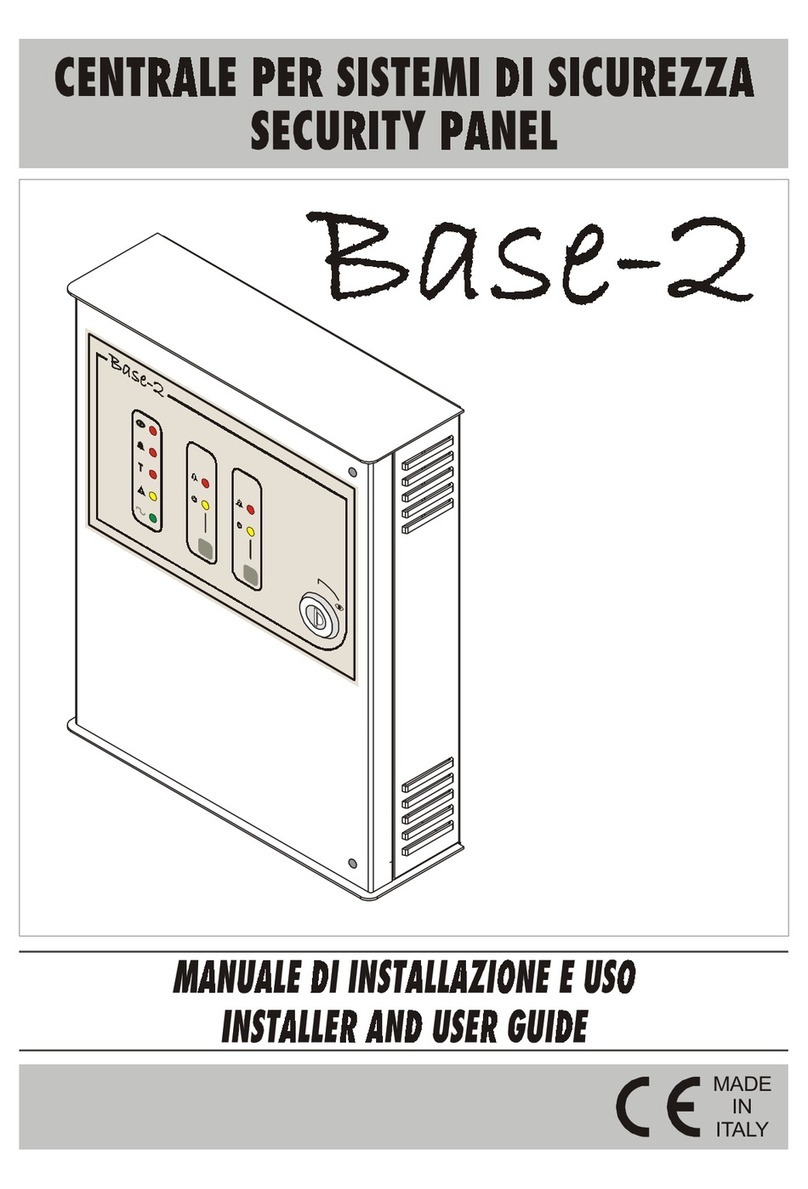
Bentel Security
Bentel Security Base-2 Installer and user guide
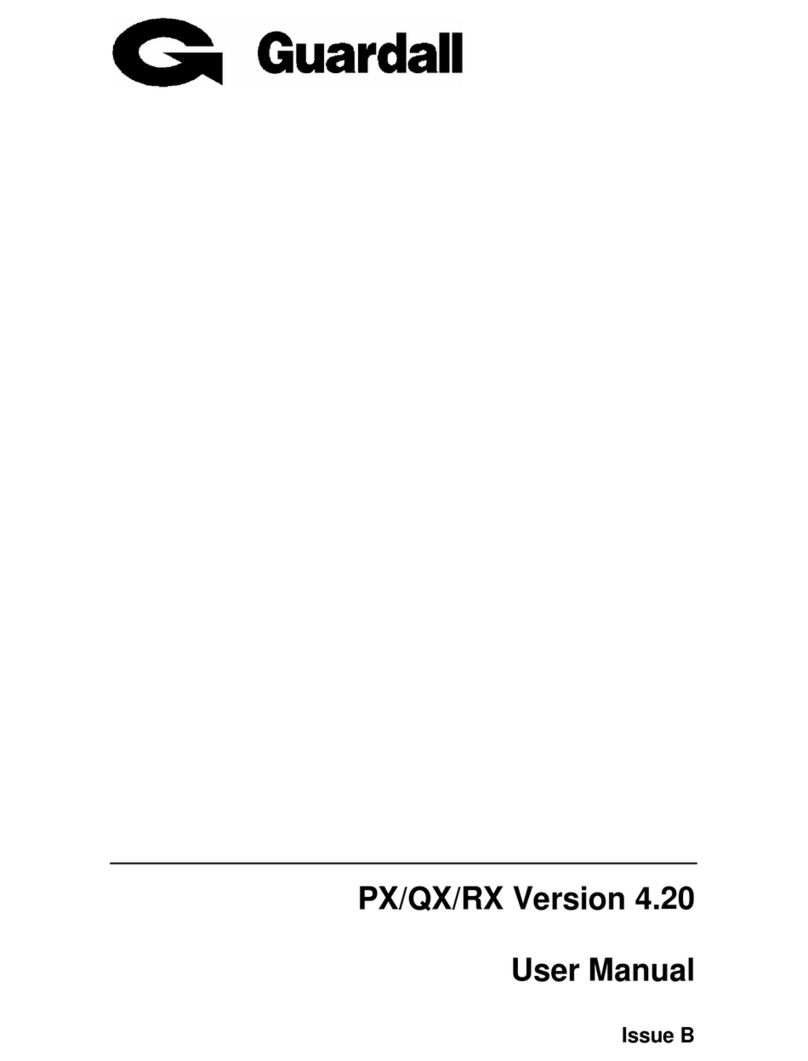
Guardall
Guardall RX16i user manual
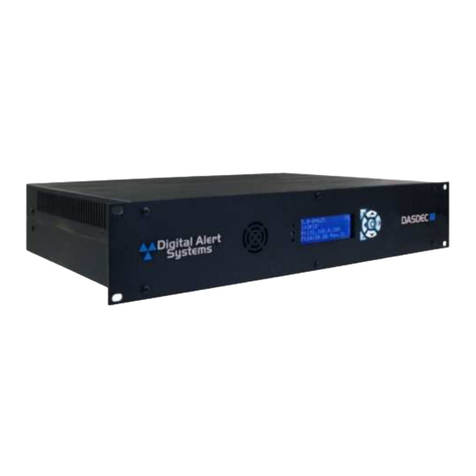
Digital Alert Systems
Digital Alert Systems DASDEC-III Hardware installation guide
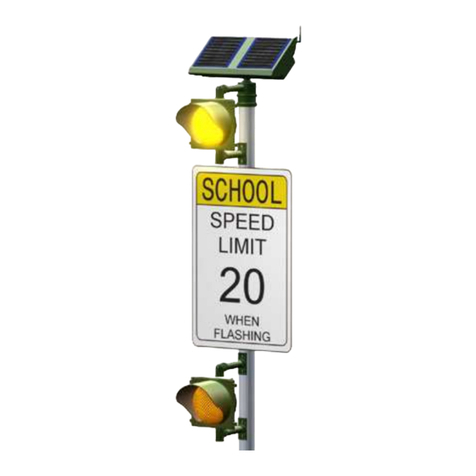
Carmanah
Carmanah R829 owner's manual
